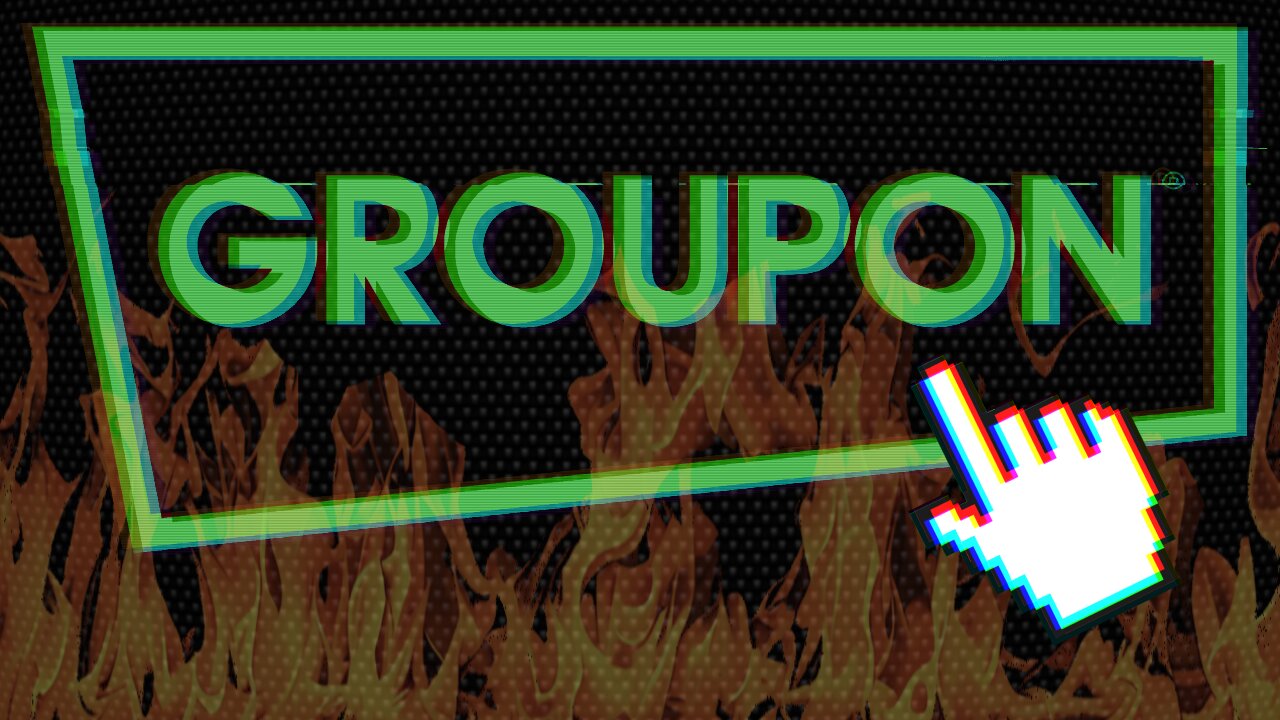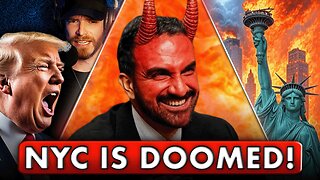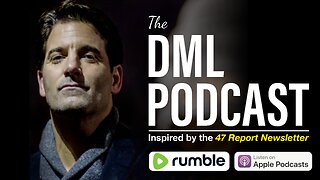Premium Only Content

Groupon Rejected $6 Billion. Now It's Worth NOTHING
Groupon had a very weird yet highly predictable downfall. Despite once being the fastest growing tech company on the planet.
In 2010, the rise and fall of Groupon became one of the most dramatic tech startup collapse stories of the decade. With a simple business model, Groupon quickly dominated the daily deals market. It offered customers huge discounts—often 50% or more—on everything from restaurants to spas, fitness classes to exclusive events. Consumers were excited. Small businesses were promised exposure, a surge of new customers, and long-term loyalty.
But the collapse came faster than anyone expected. What looked like a win-win started to show cracks. The discounts, which were meant to bring repeat customers, became one-time transactions. This became known as the Groupon effect—where users took the deal and never returned.
At the core was a flawed foundation. Groupon sold small businesses the idea of growth, but drained their resources. The platform took a cut of each sale, while companies had to honour the large discount. Many saw losses instead of gains. Some even shut down after running a deal. The promised surge brought no lasting benefit.
Despite early success, Groupon struggled to evolve. It tried to go beyond coupons and become a lifestyle hub through projects like Groupon Goods. But nothing stuck. The brand was locked into its identity. No matter how it pivoted, public perception stayed fixed. It was seen as a trend, not a tech leader.
By 2012, growth stalled. Expansion had drained resources. Groupon had spent heavily to launch in cities and countries that lacked long-term potential. Costs rose. Losses grew. And user interest faded.
When Groupon filed for its IPO in 2011, it was hyped as the next big thing. Shares opened at $20. It looked like success. But behind the scenes, losses mounted. Once financial details were revealed, confidence dropped. The stock tumbled. The crash became a warning about overvalued startups.
Groupon’s loyalty problem was deeper than marketing. It was structural. The company built itself on limited-time deals and quick engagement. But it had no strategy to turn buyers into regulars. Customers chased discounts and moved on. There was no reason to stay.
As more businesses caught on, participation dropped. Merchants shared horror stories—overbooked services, tight margins, and customers who never returned. Without fresh deals, the platform lost its appeal. The daily deals model began to fade. Most copycats failed too.
Timing, overconfidence, and poor execution all played a part in Groupon’s decline. The company grew fast and ignored early warning signs. Leadership failed to adapt. They doubled down on a model that no longer worked. Even with investor pressure, the strategy stayed the same.
What started as a multi-billion dollar success story became a case study in failure. Groupon promised to change shopping forever. Instead, it showed how hype can hide risk. And how growth without retention leads to collapse.
It wasn’t a lack of demand that brought Groupon down. It was the failure to deliver lasting value. Customers got one-off savings. Businesses lost money. Investors were left with plummeting stock. Groupon remains a reference point in conversations about startup bubbles and unsustainable business models.
Its story proves that innovation isn’t enough. Without retention, value, and trust, no buzz can keep a company alive. Groupon’s rise and fall is a reminder of what happens when expansion outpaces foundation—and when promise isn’t backed by strategy.
00:00 The Rise of Groupon
02:44 How Groupon made money
03:09 Groupon Horror Stories
03:54 The Groupon Lie
04:26 Hidden costs for merchants
05:18 Diluted Deals
06:10 Groupon’s Strategic Errors
07:08 Groupon IPO hype and valuation
07:44 Groupon’s accounting tricks
-
 7:32
7:32
Mini Money Docs™
4 months agoWhat Killed Quiznos? (It Wasn’t Subway)
15 -
 LIVE
LIVE
Graham Allen
1 hour agoTold You The War Was FAR From Over… The Blue Wave Just Proved It! Evil Is Fighting Back!
20,620 watching -
 LIVE
LIVE
Wendy Bell Radio
5 hours agoLike Sheep To Slaughter
8,149 watching -
 LIVE
LIVE
DML
59 minutes agoDML LIVE: NYC Goes Socialist: Mamdani’s Victory
664 watching -
 1:04:43
1:04:43
Chad Prather
13 hours agoTruth on Trial: When Fear Meets Faith
47.2K13 -
 LIVE
LIVE
LFA TV
12 hours agoLIVE & BREAKING NEWS! | WEDNESDAY 11/5/25
3,565 watching -
 LIVE
LIVE
The Chris Salcedo Show
12 hours agoDems Win In Dem States...And They Celebrate?
629 watching -
 1:04:43
1:04:43
Crypto Power Hour
10 hours ago $0.03 earnedPsychology Of Crypto Market Cycles
28.3K6 -
 9:58
9:58
Clintonjaws
12 days ago $0.11 earnedKaroline Leavitt's Response To 'The View' Host's Nasty Attacks Is Perfect
26.9K16 -
 24:23
24:23
World2Briggs
20 hours ago $0.01 earnedTop 10 Towns You Can Retire on $1900 a month in the Pacific North West.
18.6K8